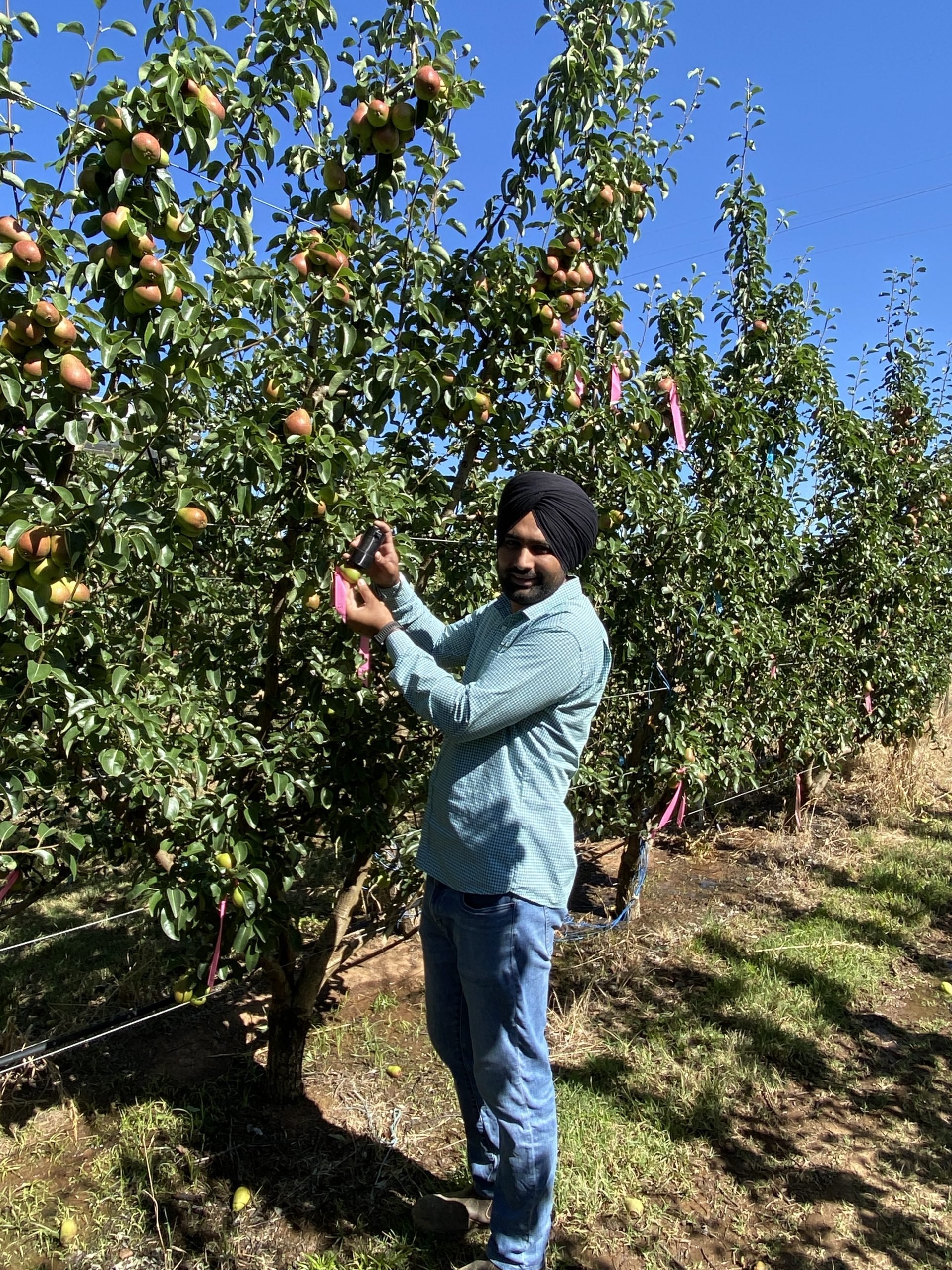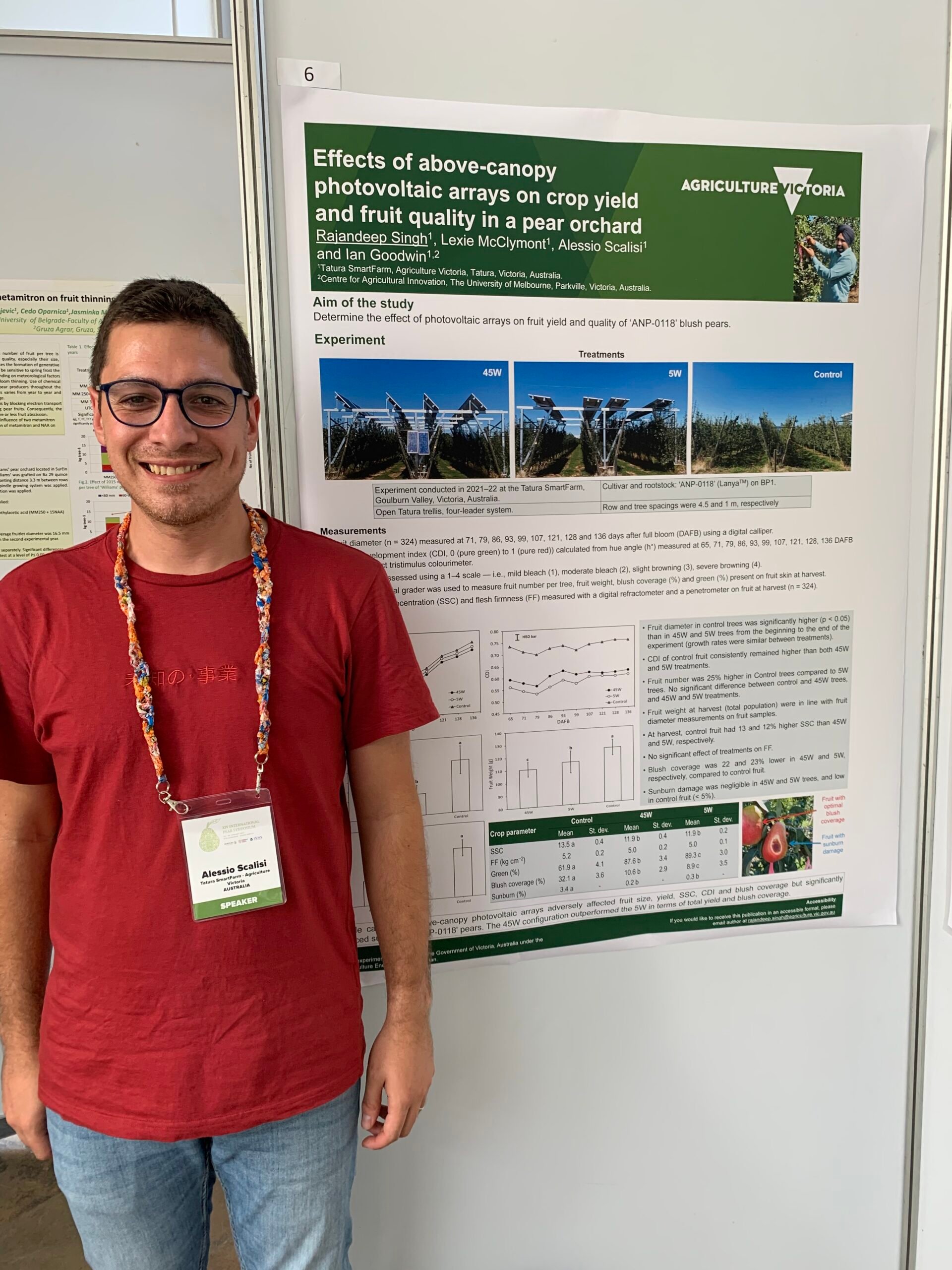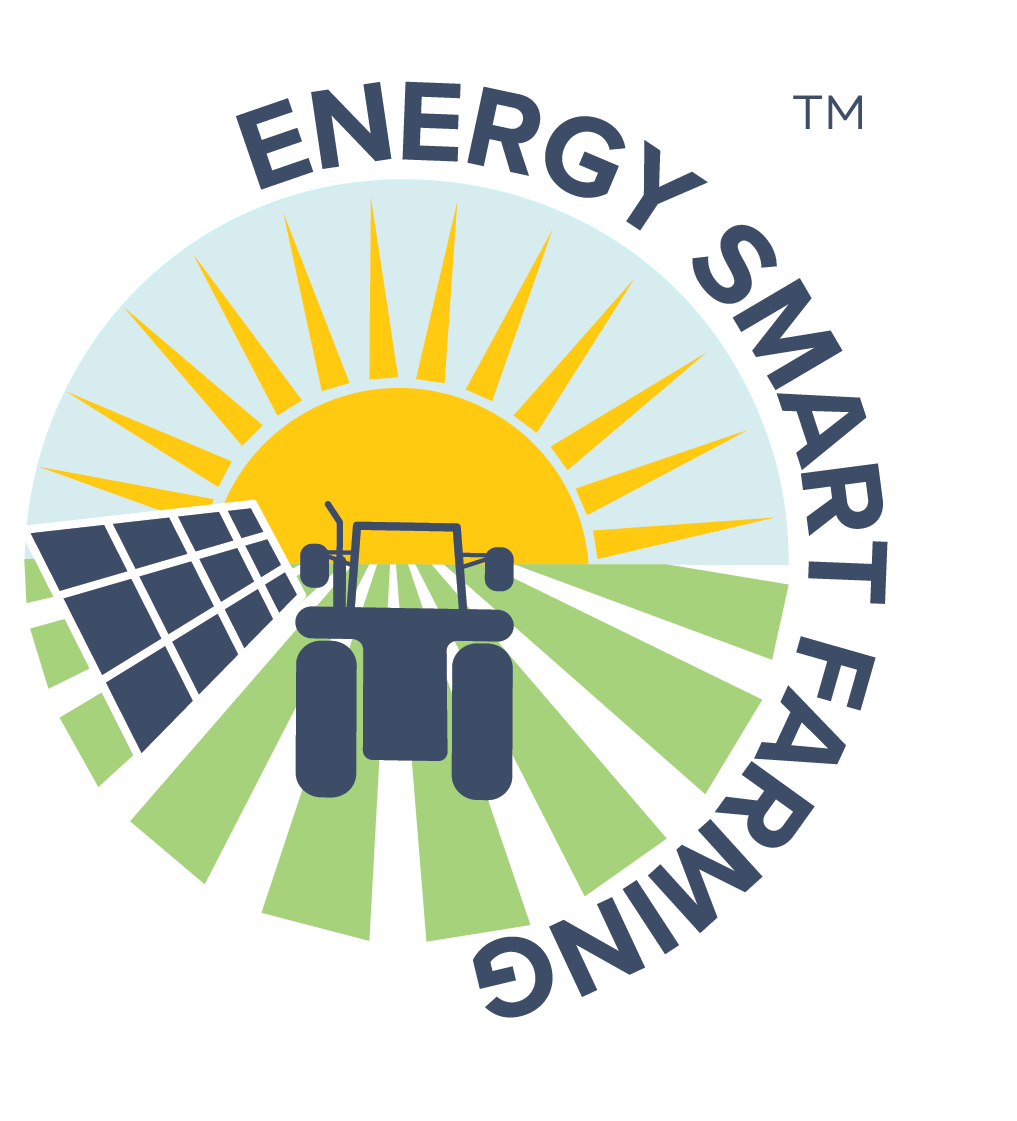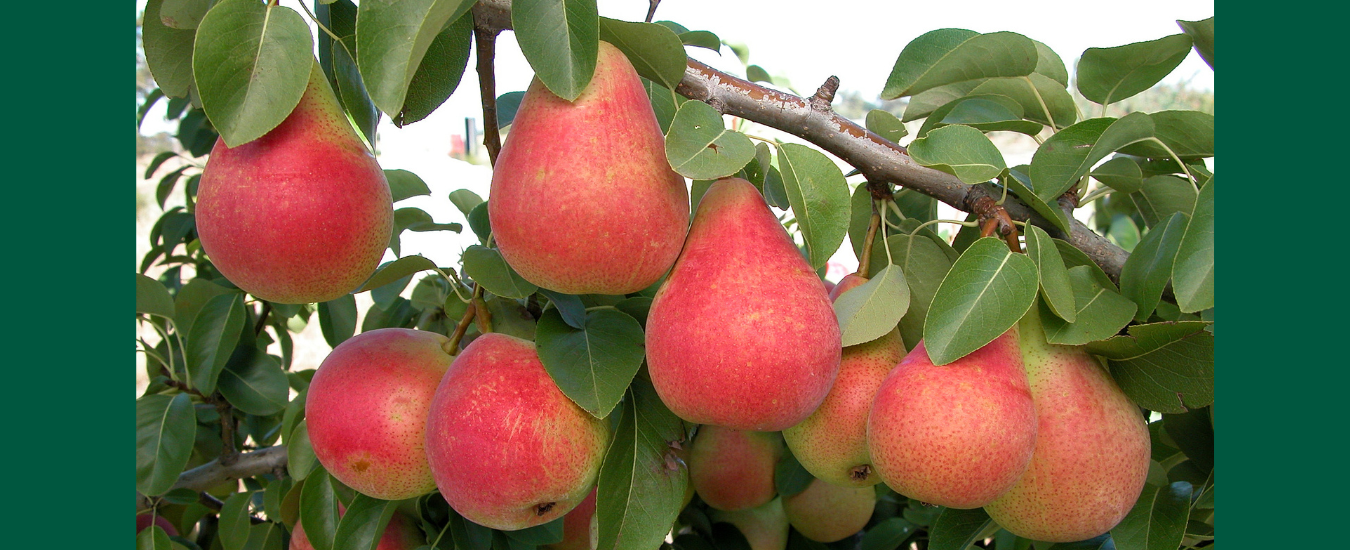Agrivoltaics is a new integrated approach that has potential to simultaneously address agricultural and energy issues. This study evaluated the effects of shading from different configurations of photovoltaic arrays above the tree canopy on productivity of pear trees.
The experiment was established in 2021–22 at the Tatura SmartFarm over a pear orchard (‘ANP-0118’ on BP1 rootstock, marketed as a Lanya™) with north–south row orientation. Trees were trained on Open Tatura trellis (i.e., V system). Two photovoltaic array treatments (two 1.05 m wide strips above each tree row) angled at 45° and 5° to the horizontal and facing west, and a control treatment (no photovoltaic array above the canopy) were used in the experiment. The energy produced by photovoltaic arrays was monitored and sequentially directed to battery storage and the energy grid.

Research Scientist Rajandeep Singh measuring fruit colour in the orchard using a portable Bluetooth colorimeter.
Fruit diameter and fruit skin colour attributes were monitored with repeated measurements in the two months before harvest with a digital calliper and a tristimulus colourimeter, respectively. Fruit number, fruit size, blush coverage and skin colour properties were measured with an in-line commercial grader. Visual assessments of sunburn damage, and destructive measures of soluble solids concentration and firmness were conducted at harvest.
This abstract was submitted to and poster displayed at the XIV International Pear Symposium — Stellenbosch, South Africa, 22-26 January 2023.

Alessio Scalisi presenting a poster on the Effect of above-canopy photovoltaic arrays on crop yield and fruit quality in a pear orchard at the XIV International Pear Symposium — Stellenbosch, South Africa, 22-26 January 2023.
PDF – Effect of above-canopy photovoltaic array on crop yield and fruit quality in a pear orchard Poster
Acknowledgements
The experiment was funded by the Government of Victoria, Australia under the Agriculture Energy Investment Plan. The author acknowledges the valuable contributions of Plant Production Sciences team at the Tatura SmartFarm.




2 comments, add yours.
Rwathia Agrofarm.
Has any Agrivoltaic experiment been done on an Avocado Orchard?
jodieharrison
AuthorHi, Thanks for your question.
I have been in touch with our agrivoltaic experts and some of the overseas presenters from the recent conference. They are unaware of any at the moment but have expressed that it would be an interesting crop to work in and based on results of avocados under shading nets it is likely that some pilots will be constructed soon.
MIGAL Galilee Research Institure in Isreal has mentioned that avocados could be a crop suitable for agrivoltaics https://www.migal.org.il/en/agrivoltaics-development-programs
AgriVoltaics2023 is a conference being held in April this year and we will be able to find out further information if experiments have been set up in this area.
Hope this helps
Regards,
Jodie Harrison